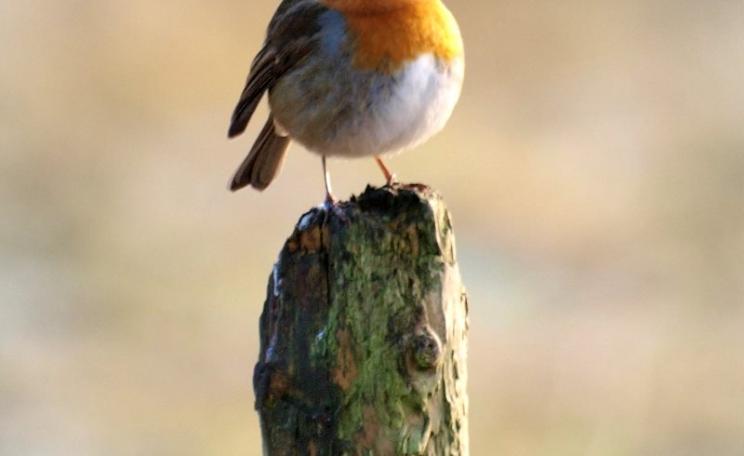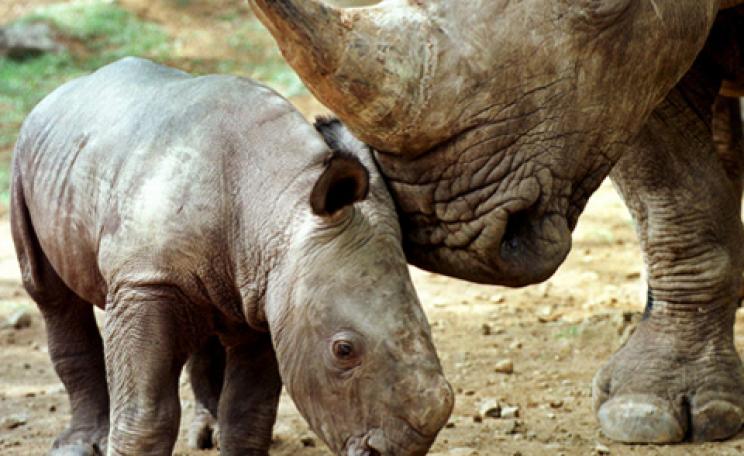We must rise to the challenge of making wildlife recording interesting, accessible and rewarding for younger generations; volunteers are the life-blood of wildlife recording, and indeed conservation more widely, and we neglect them at our peril.
The State of Nature report, released today - whilst tells one cheering tale: of many successes in special places saved, new habitats created, and species dragged back from the brink of extinction.
But these efforts will have to be redoubled if we are to address the year-on-year loss we can chart back over nearly 50 years and - we suspect - has been proceeding unmeasured for decades prior to this.
Along with the other 48 authors of this report, I take some satisfaction in seeing the fruit of our long labours, and its contribution to the debate about the nation's wildlife and what needs to be done.
Furthermore, the publication stands as an achievement for the 50-plus partners in the UK report, with further organisations contributing to the national-level reports for England, Northern Ireland, Scotland and Wales.
These partners span the spectrum from the giants of UK conservation with membership measuring in the millions, through to the volunteer-run, back bedroom-based recording societies, and in-between encompasses a range of focussed conservation NGOs and outstanding centres of research.
We all share a common ground of dedication, expertise and determination, and it is surely sign of a healthy and mature conservation movement that we can come together, standing shoulder to shoulder.
A vast Peoples' Movement of volunteer naturalists
But more than everything, this report should stand as a tribute to the many of thousands of volunteers who collect the data upon which it is based. The UK has a long and proud history of recording its natural history and most of that recording has been done by amateurs.
Of course, back in the days of Gilbert White there was no such thing as a professional naturalist, but even though recent decades have seen the increasing emergence of the professional - those like me, and my State of Nature co-authors - we are still dependent on the amateurs, although tend to avoid that word given its inappropriate connotations of inexperience.
The volunteers we rely on are dedicated, experienced, expert, and in many cases easily the match for us professionals. They give up time, bear the financial costs, brave the elements, walk many miles, ignore the blisters and the midge-bites.
The Government's statistics estimate that these volunteers put as many as seven-and-a-half million hours into recording wildlife every year, and the value of the volunteer contribution to structured monitoring schemes is in excess of £8 million per annum, whilst that in wider wildlife recording is likely an eight-figure sum.
Whilst the 'Big Society' was a political buzz phrase with a shelf-life little longer than an electoral campaign, this is just that - volunteers contributing for the greater good, providing the evidence base upon which successful conservation must be based.
We must rise to the challenge of making wildlife recording interesting, accessible and rewarding for younger generations; volunteers are the life-blood of wildlife recording, and indeed conservation more widely, and we neglect them at our peril.
Of course, I need to highlight the vital role of us professionals in this: without the State of Nature partner organisations, who run monitoring and recording schemes, all of this volunteer potential would be untapped. Training, scheme design, data collection, analysis and reporting as easily digestible results to inform and guide conservation effort - that's what we do, and of course, this needs funding.
It costs about £2.5 million to run the schemes that liberate that £8 million-worth of fieldwork effort - a bargain. Of that, the government contributes around half. In these cash-strapped and uncertain times, we must fight tooth and nail to retain that government funding, and ensure that they understand the terrific value for money this provides.
The National Biodiversity Network - the sophisticated online bucket into which biological records are poured at an ever-increasing rate - accrues some 4.5 million records every year.
Allied to a suite of analytical methods being developed by another State of Nature partner, the Centre for Ecology and Hydrology, means we are getting ever-better at harnessing the volunteer effort. In the first State of Nature report we compiled trends in 3,148 species; this year we have trends for 3,816, and I confidently predict an even greater leap by the time of the third report in 2019.
Can we wean our youngsters off Pokemon-Go and onto wildlife?
So we should salute these volunteers, and be thankful that we have them. But we worry there won't be enough of them in the next generation.
On the side of meetings, we share nervous anecdotes about the volunteer-base - the sad losses as former stalwarts hang up their binoculars, hand-lenses and nets, and the apparent absence of a younger generation.
We fret about the competition for the attention of the recorders of the future and how the subtle attractions of natural history may be overwhelmed by the lure of computers, Pokémon-Go, nightclubs. Maybe this was always the case - perhaps the naturalists of the 1920's worried that a new generation of ornithologists and entomologists would be waylaid by the thrills of the Charleston and Lindy Hop?
Maybe I should be more optimistic, marvelling at the new opportunities - online recording, identification apps, the perhaps overstated potential for sampling 'environmental DNA' by which a teaspoon of puddle-water will reveal every species that has hopped, crawled or swum through it - and hoping that these will attract in new blood, the next generation of data gatherers.
Certainly a plethora of websites and apps has nurtured recording communities, and it has never been so easy to collect and contribute data. One of the new State of Nature report's case studies reveals how scientists at the British Trust for Ornithology have recruited over 800 bat surveyors, within Norfolk alone, by developing a lending library of automatic bat detectors.
Our smartphones enable us to photograph an unknown critter, share the picture with an online community, and receive an identification within minutes. Another couple of minutes later and the sighting can be logged into the appropriate database, ready to feed into a future State of Nature report.
Do the opportunities provided by this technology allow us to go toe-to-toe with the competing attractions of modern life? It's been calculated that six day's-worth of sightings by Pokémon-Go players would equal all the wildlife observations made globally in the last 400 years.
Whilst we may never match that, we must rise to the challenge of making wildlife recording interesting, accessible and rewarding for younger generations; volunteers are the life-blood of wildlife recording, and indeed conservation more widely, and we neglect them at our peril.
Dr Mark Eaton is the RSPB Principal Conservation Scientist.
Read the full State of Nature report.
Also on The Ecologist: 'State of Nature 2016 report shows continued loss of Britain's biodiversity'.




